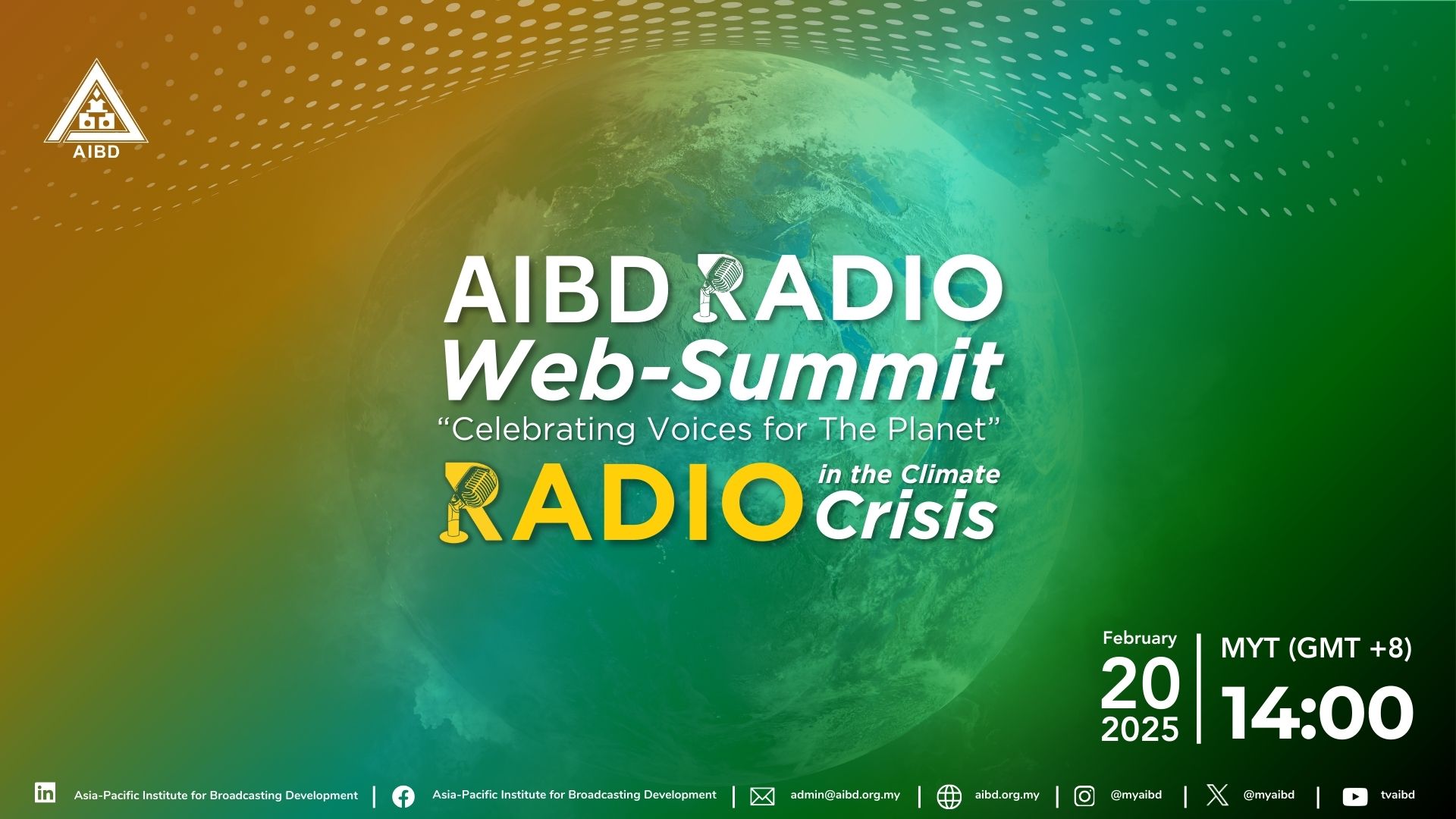
Broadcasters Study Ozone and Climate Issues
A UNEP-AIBD workshop trains TV producers from the Asia-Pacific to spread awareness about ozone depletion and climate change. “Why don’t the greenhouse gases escape through the hole in the ozone layer?” asks an average TV viewer in a cartoon that first appeared in a US newspaper a few years ago. That question illustrates the confusion in the minds of many non-specialists across the world.
A UNEP-AIBD workshop trains TV producers from the Asia-Pacific to spread awareness about ozone depletion and climate change.
“Why don’t the greenhouse gases escape through the hole in the ozone layer?” asked an average TV viewer in a cartoon that first appeared in a US newspaper a few years ago.
That question illustrates the confusion in the minds of many non-specialists across the world. As TV viewers hear more about the twin atmospheric environmental problems – ozone depletion and climate change – they are searching for clarity and guidance.
Broadcast television, as the most pervasive mass medium in the Asia-Pacific region, can respond to this need. TV journalists and producers can play a lead role as ‘knowledge brokers’ and ‘friendly guides’ to these problems. But first, they need to understand the issues themselves.
For the second consecutive year, the Asia-Pacific Institute for Broadcasting Development (AIBD) and the OzonAction Programme of the United Nations Environment Programme (UNEP) organized a three-day regional media workshop on Understanding Links Between Ozone Depletion and Climate Change to sensitize them on links between climate change and ozone depletion.

The workshop, held from 20 – 22 February 2013 in Kuala Lumpur, Malaysia, brought together a dozen TV producers and public communications officers from 9 countries in the region.
They were exposed to the basics of ozone and climate science, and highlights of accomplishments of the Montreal Protocol to save the ozone layer. They were also briefed about on-going efforts to phase out HCFCs, a category of industrial gases used widely in air-conditioning, refrigeration and electronics industry.
They found out how phasing HCFCs not only protects the ozone layer, but also mitigates global warming and provides energy efficiency benefits. Asian countries are the main producers and consumers of HCFCs. Under the Montreal Protocol, signed by 197 countries, their use is being frozen in 2013 and will be phased out completely by 2030.
The workshop was facilitated by the UNEP OzonAction Team, and regional media experts Nalaka Gunawardene, Director of TVE Asia Pacific, and Moneeza Hashmi, President, Commonwealth Broadcasting Association (CBA) and General Manager, HUM-TV of Pakistan.

Participants and Consultants of the workshop with Mr Yang Binyuan, AIBD Director
Ms Mashitah Darus, Principal Assistant Director, Air Division/National Ozone Unit, Department of Environment in Malaysia served as a resource person and shared the host country’s experience in phasing out ozone-depleting substances (ODS).
Experts from UNEP talked the participants through the technical aspects of the complex relationships between ozone-depleting substances, the greenhouse potential of their alternatives, as well as the future options for the refrigeration and air-conditioning industries.
They also summarized the negotiations under the Montreal Protocol and its amendments, as they relate to greenhouse gas targets under the Kyoto Protocol. The consultants highlighted the ways to simplify the message in TV news and current affairs broadcasts, in documentaries and through infotainment and tailor it to different target groups.
The workshop content was non-technical and focused on journalists’ practical needs. The schedule provided many opportunities for discussion, small group work and other interaction. Several videos and documentaries on ozone depletion and climate change were screened.
Participants made a field visit to an air conditioner manufacturing plant of OYL Manufacturing Company Sdn Bhd in Sungai Buloh. With assistance from the Montreal Protocol’s Multilateral Fund, OYL Manufacturing is shifting to using coolants that do not contain HCFC.

Field visit of OYL Manufacturing Company Sdn Bhd in Sungai Buloh
After two days of briefings and field visit, participants formed three groups to work on an ozone/climate related TV product using different formats in TV: news and current affairs, documentary and infotainment. They presented their work, which was followed by enthusiastic discussions.
Participants are required to produce a news programme or documentary on a relevant aspect of ozone/climate in their own countries upon their return.
Participants came from Bangladesh, Bhutan, Cambodia, Fiji, India, Maldives, Malaysia, Pakistan, Philippines and Thailand. While some are producers with TV broadcast stations, others are employed by state environmental agencies or science communication organisations.
With half of the world’s population and rising consumption levels, countries in the Asia-Pacific region hold the key to humanity achieving environmental sustainability. Awareness – at public and policy levels – is crucial in ensuring that developing Asian countries have sustainable economic growth, and use energy and natural resources more efficiently.
By Mr Nalaka Gunawardene, Director of TVE Asia Pacific, and Ms Moneeza Hashmi, President, Commonwealth Broadcasting Association (CBA) and General Manager, HUM-TV of Pakistan.





